Tirta Empul
Label : Popular among Locals
Tags : Temple
Timings : 9:00 AM - 5:00 PM
Entry Fee : Adults: IDR 15,000,
Children: IDR 7,500
Ways to Experience this attraction
Tirta Empul, Bali Overview
Built in 962 AD during the reign of Warmadewa dynasty, Pura Tirta Empul or Holy Water Temple, is the legacy of a traditional good versus evil tale. It is home to a holy mountain spring that feeds the Pakerisan river and is revered for its ritual purification by devotees. Tourists are allowed to take the ritual bath.
Once built as places of worship, over time the ancient monuments of Bali have become star tourist spots as not only temples but also beautiful works of art. Pura Tirta Empul or the Holy Water Temple is one such temple, highly cited and visited by both locals and tourists alike. A gorgeous 10th-century structure dedicated to Lord Vishnu, it is revered by the Balinese Hindus. Tirta Empul's rich lore and legend and the mystery behind its healing spring draw curious travelers here from all over the world.
Its holy spring's mystical lore and healing properties keep Tirta Empul busy and active throughout the year. Both as a temple and a hot tourist spot, the legend of Tirta Empul's soul-purifying water make it a must-visit for those out to explore the mysteries of Indonesia's ancient lore.
Read More on Tirta Empul
The Holy Spring of Pura Tirta Empul and Bathing Ritual
_20181205181815.jpg)
Balinese Hindu temples are called Pura. Built around a sacred spring in the village of Tampaksiring, Tirta Empul is one such Pura, known for its magical healing properties. A holy spring temple, it is also the source of the Pakerisan River. Locals believe that taking a dip in the sacred pools of Tirta Empul will purify them. On any normal day, the temple is filled with devotees praying and cleansing themselves in the crystal-clear water of the purification pools. But on days of festivals like Galungan and Kuningan, the whole island comes alive and the temple teems with locals who celebrate the victory of good over evil via a series of rituals.
_20181205182101.jpg)
Empul, Emanating From 30 Spouts (Source)
For the bathing ritual, devotees head to the two rectangular purification pools in the inner sanctum of Pura Tirta Empul. Carved out of stone, these pools are filled with holy spring water released from 30 fountainheads. Devotees stand in line in waist-high water and start bathing under the first spout on the left. Next, they join the line to the 2nd spout. This goes on till the 11th spout. The last two spouts are off-limits to devotees as they are reserved for funeral rites. The water is considered holy and so, some even bottle it to take it home.
Religious Significance of Tirta Empul
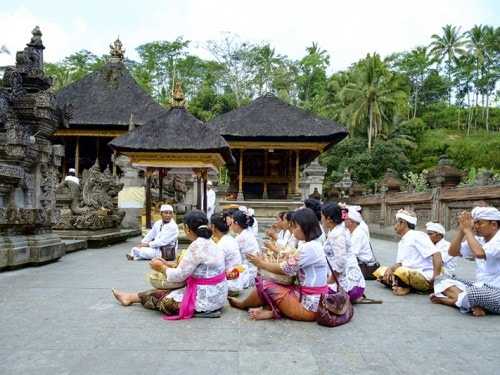
The Holy Spring of Tirta Empul is Believed to be a Result of the Mythical Battle
Between Lord Indra and King Mayadenawa (Source)
Tirta Empul has a fascinating folklore. It is said that Tirta Empul was the result of a mythical battle between Lord Indra and King Mayadenawa. Legend has it, thousands of years ago Bali was ruled by King Mayadenawa. The mighty king had the power to transform himself into anything he wanted. With time, he was consumed by pride and began using his powers for black magic. Deciding to put a stop to Mayadenawa's evil, Lord Indra descended to earth and lead his forces into battle. The king's troops were defeated. Mayadenawa however, survived.
Later that night, walking on the sides of his feet as to not leave footprints, Mayadenawa snuck into Indra's camp where he and his army slept peacefully. There, the king created a beautiful pond and filled it with poisonous water for the troops to drink from. The next day it happened as Mayadenawa had willed. Indra woke up to find most of his troops dead or dying. At this very moment, Indra took his staff and thrust it into the ground. The holy spring burst forth and Tirta Empul was born.
Seeing his plan fail, Mayadenawa tried to escape by taking one form after the other, but Indra chased him nonetheless. When the king finally transformed into a boulder, Indra shot an arrow through him, killing him instantly. It is said that Mayadenawa's gushing blood created the Petanu river. This epic triumph of good over evil is commemorated by the Balinese Hindus every 210 days in a ceremony called Galungan.
Tirta Empul Temple Complex
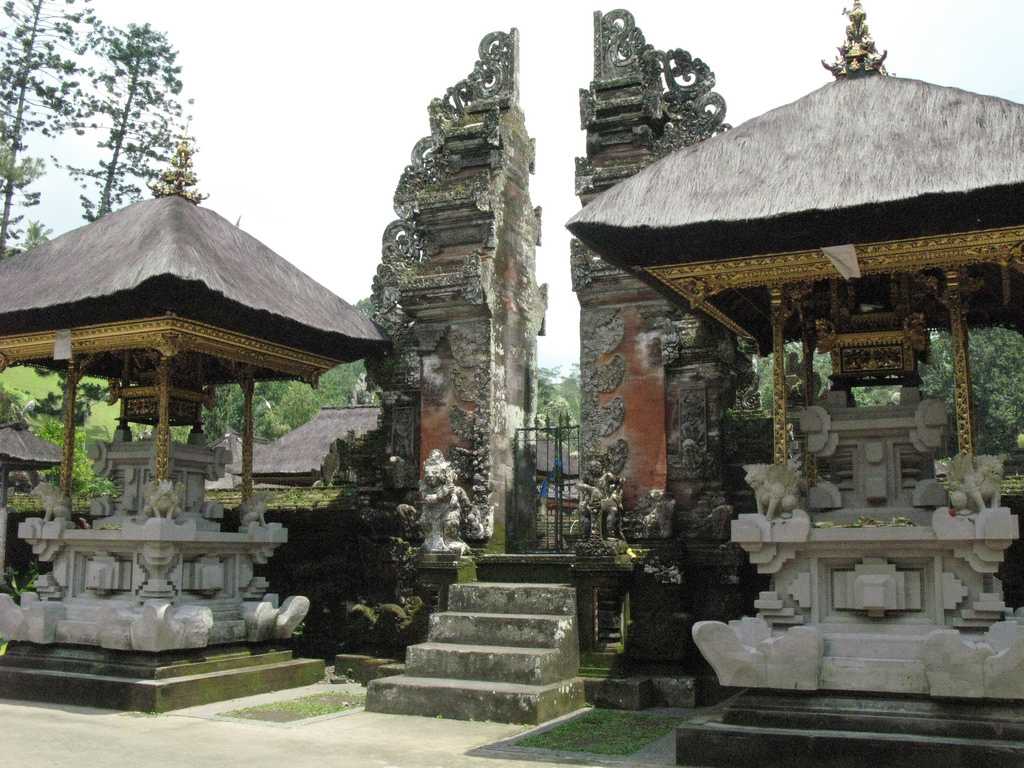
The Entrance to Pura Tirta Empul is Marked by Candi Bentar,
a Common Feature of Temples in Bali (Source)
The entry into the temple is through a beautiful split gate called the Candi Bentar. On both sides of this gate are statues of Dwarapalas or the Guardians of the gate. The Candi Bentar leads into the outer courtyard. Enclosed on three sides by a giant stone wall, the outer courtyard is where tourists get their first whiff of Tirta Empul and can buy local goodies from small stalls.
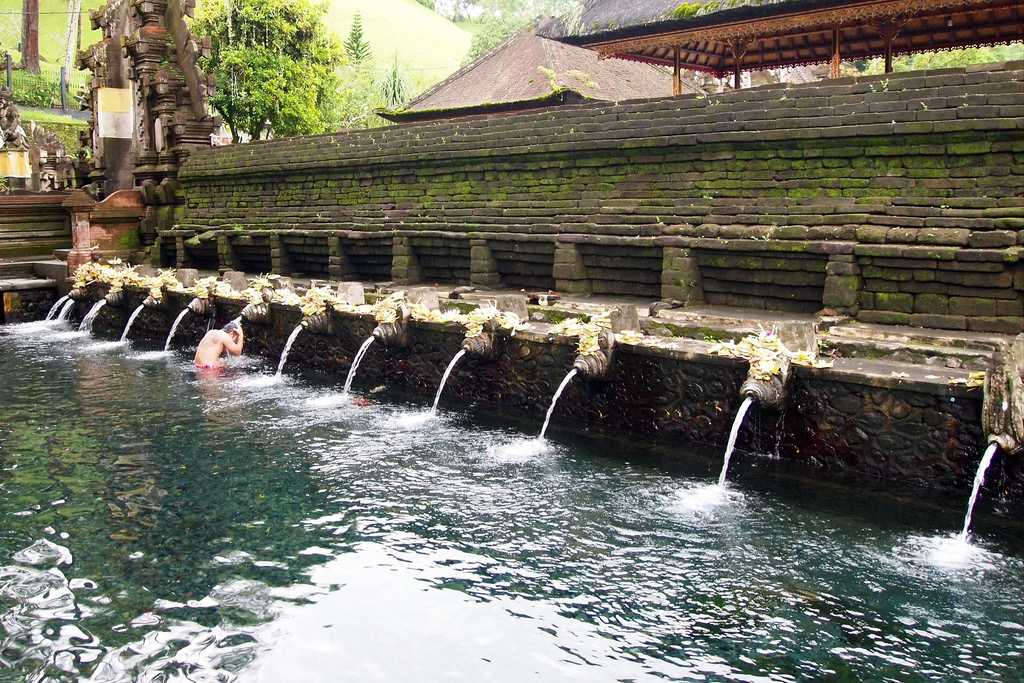
Next comes the inner courtyard or The Jaba Tengah - the main attraction of Tirta Empul. This area consists of two gorgeous rectangular pools carved out of stone. Both pools are filled with holy spring water that is released from 30 waterspouts. These are Tirta Empul's famous purification pools.
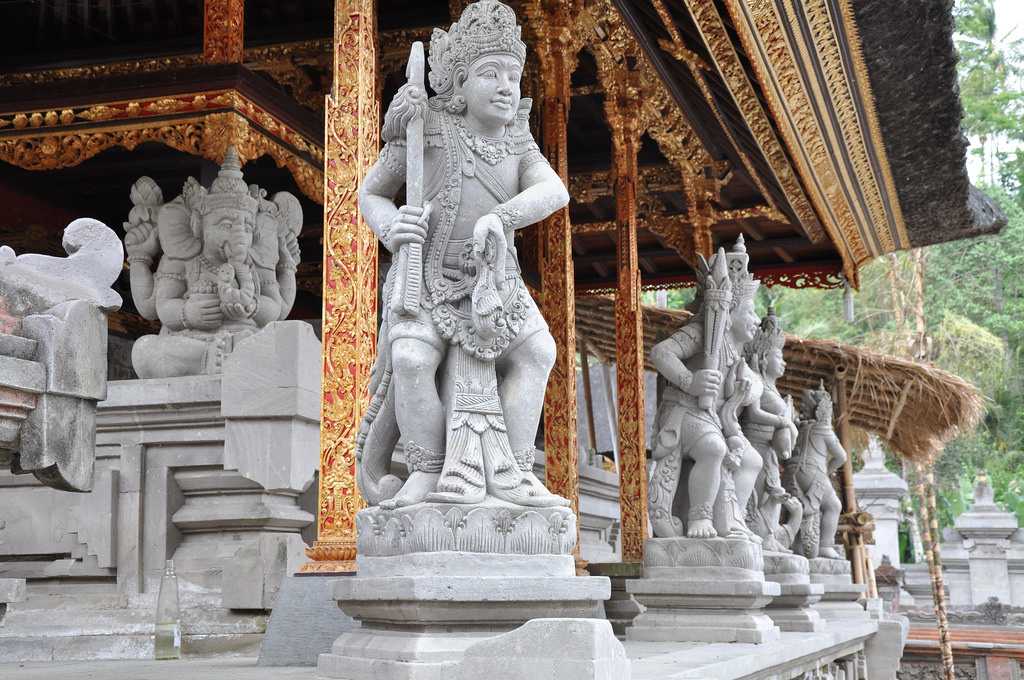
Behind the pools is the main temple area, The Jeroan. Here the devotees make offerings to the shrine of Brahma, Shiva and Vishnu. It is the quietest and most peaceful part of the temple.
_20181205190303.jpg)
The last section of the temple is the Koi Pool, and is one of the most beautiful sites in the area. Thousands of colourful Koi fish swim in the serene water of this blue pool, glittering like a diamond under the bright afternoon sun.
Dress Code at Tirta Empul
_20181205190516.jpg)
Similar to the dress code for other temples in Bali, a sarong is required to enter Tirta Empul. It is fine if you forget to carry one though; sarongs can be rented at the temple's entrance in exchange for a small donation. Also, while a regular sarong is alright for exploring the temple premises, a special green sarong is required to enter the purification pools.
Best Time to Visit Tirta Empul
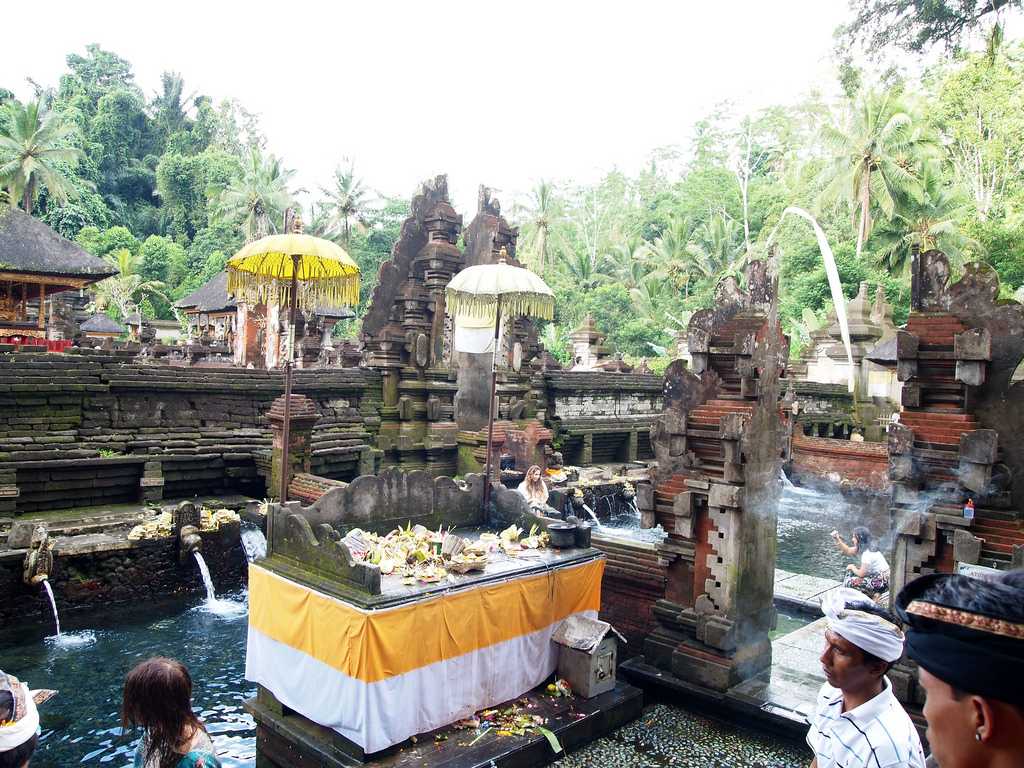
One of the best times to visit Tirta Empul would be on a full moon night. On such a night the Balinese Hindus perform their rituals inside the temple and it is a sight to behold. Afternoon is also a good time as the waters of the purification pool stay warm for a dip from noon to evening. The temple can get really crowded on religious holidays. You might want to avoid visiting on weekends or days of religious festivities.
Tips for Visiting Tirta Empul
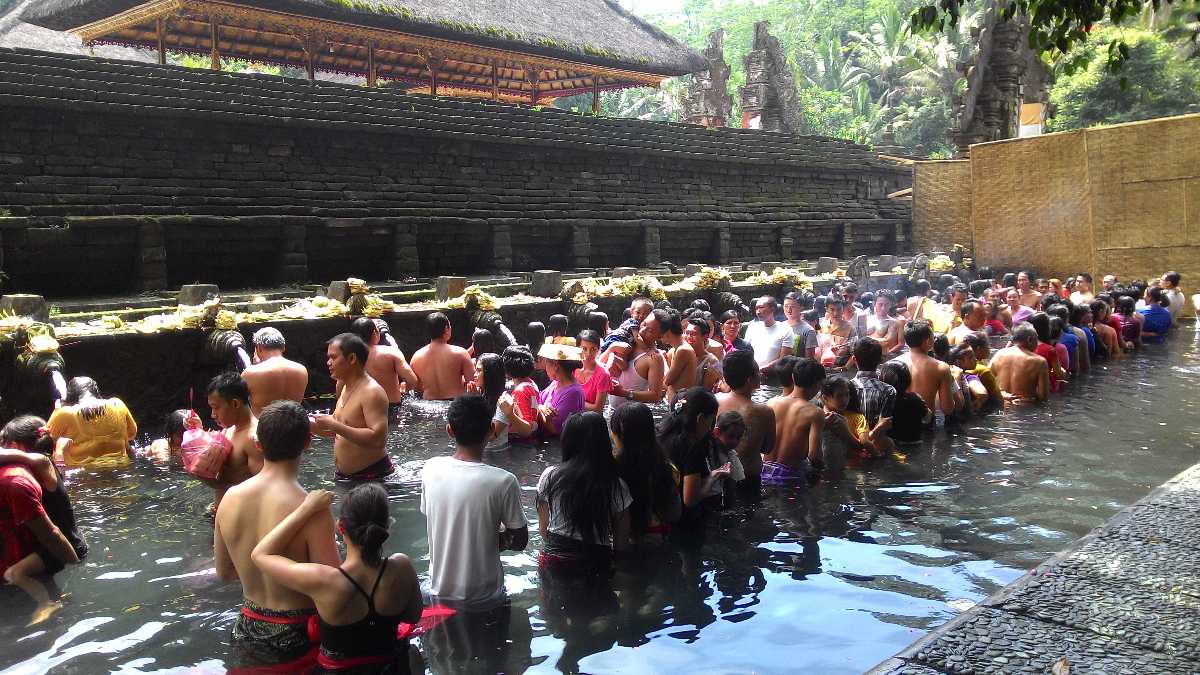
- It can take 30 mins to one hour to thoroughly explore the temple, so plan your time accordingly.
- If you wish to do the purification ritual on a normal day, you still might have to wait in line as Tirta Empul is always busy.
How To Reach Tirta Empul
_20181205192007.jpg)
The Pura Tirta Empul Temple located in Manukaya Village, district of Tampaksiring, Bali is quite close to Ubud and Denpasar. It is also relatively easy to get to. You can either rent a car or hire a taxi to the temple. The drive from Ubud to Tirta Empul could take 30 minutes and from Denpasar around one hour.
